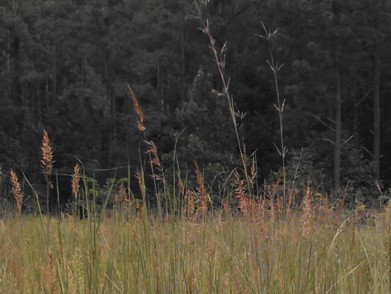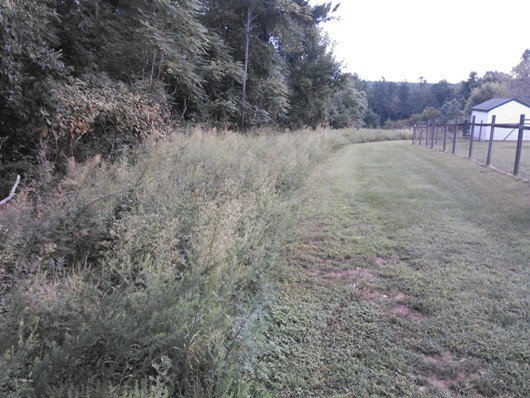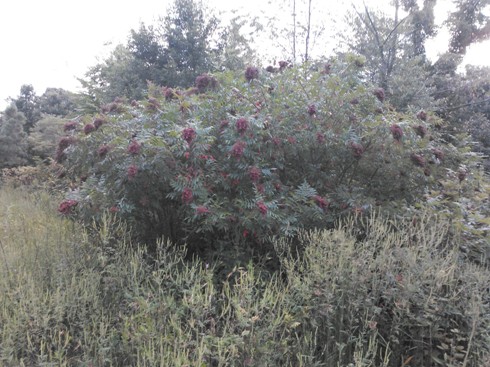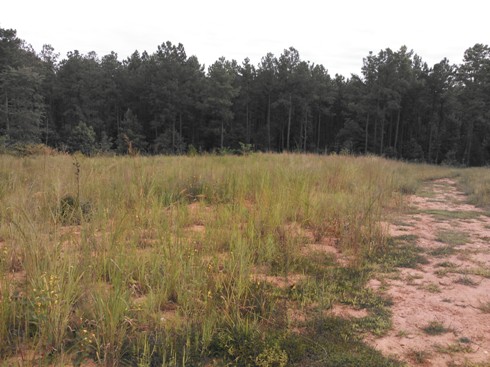… or, You Don’t Have to Have 500 Acres to Make a Difference
Happy Fall to everyone! Though I do not like the shortening days, I do love college football (and if the Texas A&M / South Carolina game is any indication – what a season we are in store for), dove season, fall colors and cooler weather.
I titled this month’s post the way I did because I want people to know many of us in this profession do try to practice what we preach. There is no substitute for “doing” to truly learn how to accomplish something. This month I hope to let photos do some of the talking for me.
I wrote last year about the start of my small home project on a logging deck below my house. But I have been working on all aspects of my project for 10 years now. My goal was to develop my small property into a microcosm of a larger farm field. All totaled, counting my yard and logging deck, I have about 2 to 2.5 acres in this project. All managed with hand tools and small yard equipment like a back-pack sprayer, walk behind seeder, and lawn mower. I am battling numerous invasive species, but I am winning, or at least adapting. It’s a work in progress, but it is at a point now where I can bring landowners to see it and show them everything they’d need to do on a larger scale to create a quail haven (and songbirds, pollinators, etc.) on their farm.
Picture 1) My “yard border” – yes, it includes some invasives like sericea, but also showing up this year were wild senna – a great August blooming yellow flowered legume — and mist flower, a great pollinator plant. This edge resulted simply from letting the disturbance go after it was a logging road. I seeded a cover crop of millet on it and this is its second growing season.
|
|
|
Picture 2) Winged sumac thicket – sumac is an EXCELLENT mid-summer pollinator plant, it makes great summer loafing cover for quail and songbirds, rabbits love to eat its bark during winter and quail eat its seeds, too. It does not make great winter cover because it becomes sparse, but it is a great plant to have…and it tends to keep less desirable plants at bay – I have yet to see ailanthus come up within a sumac thicket.
|
|
|
Picture 3) This is my native warm season grass logging deck. This year making its first appearance was bee balm, or wild bergamot – an excellent pollinator and seed producer. I also had a lot of black-eyed Susan, some Indian blanket, and now blooming well – a ton of partridge pea. Partridge pea is not only a great bugging cover for quail chicks, it also produces a good winter food seed crop. And while we all know how much pollinators like its blooms, the larvae of many butterflies feed heavily on the plant itself. There is still a good bit of bare ground on this deck in places, making it good for quail. Notice the logging road which has now been seeded 3 times with fescue and ryegrass is still 50% bare. These native warm season grasses tend to do well on your poorest sites.
|
|
|
Picture 4) This is a close-up of Indian grass and big blue stem. There are two tier, one butterfly species in Virginia – meaning they are species of great conservation concern. One is called the Arogos skipper and guess what its larvae feed almost exclusively on? Big bluestem grass.

Picture 5) Thicket cover and edge. This is a shot of where I planted indigo bush about 11 years ago, it is now also grown in very well with blackberry, and though you see fescue on the edge of it coming from my yard, underneath it is open and free of grass – the shrubs having done their job of shading it out – along with some spot spraying by me during times when the shrubs were dormant, but the grass was growing – like late October. The shrub loving song bird diversity around my yard is fantastic – I often see towhees, brown thrashers, field sparrows, yellow-breasted chats, white eyed vireos, cardinals, and more.
|
|
|
Picture 6) Un-mowed mess. Yes, this is an un-mowed mess – exactly what I wanted. I still have work to do in getting rid of fescue, but the area is providing some wildlife cover, and it is saving me from mowing an additional 1/3 acre every week. I mow it once during late winter every other year with a rented walk behind brush mower.
|
|
|
In this small “habitat project” I have also had quail, though they did not stay. The satisfaction I have obtained while watching this project grow, pardon the pun, has been enormous. I can now show any landowner in a very small area what they need on a larger scale to have multiple coveys of quail. I have also been able to test some ways of controlling invasives – a work in progress.
More than anything I think I can show them that these grasses, thickets, weeds and brush are so much more than that. They are habitats to be cherished and valued.











